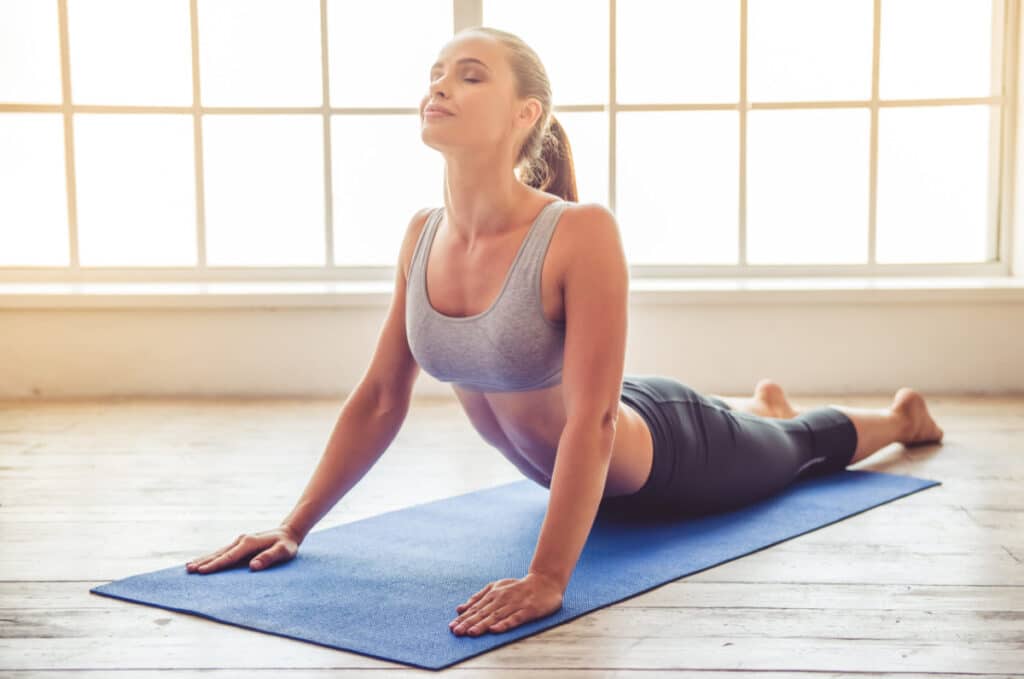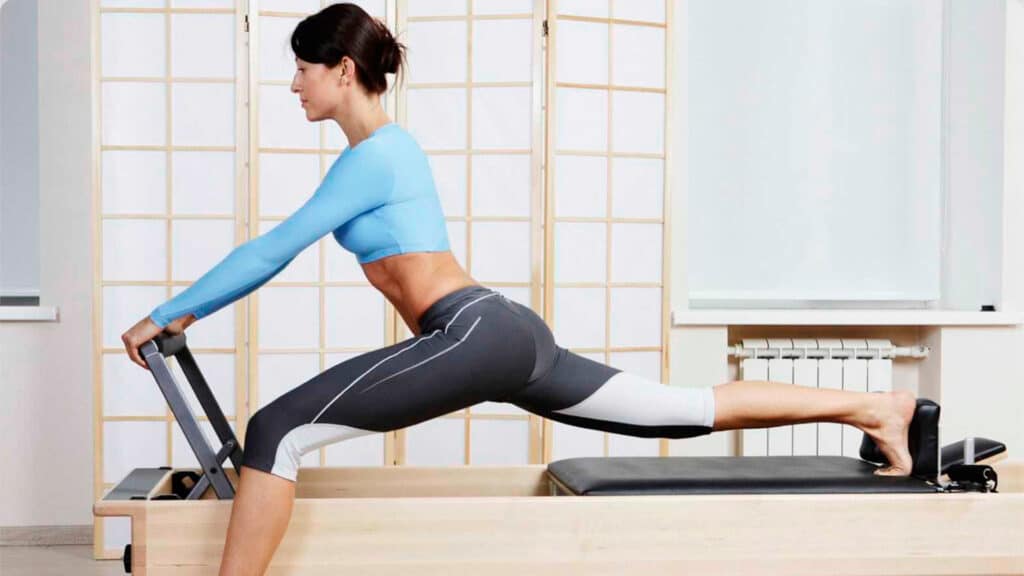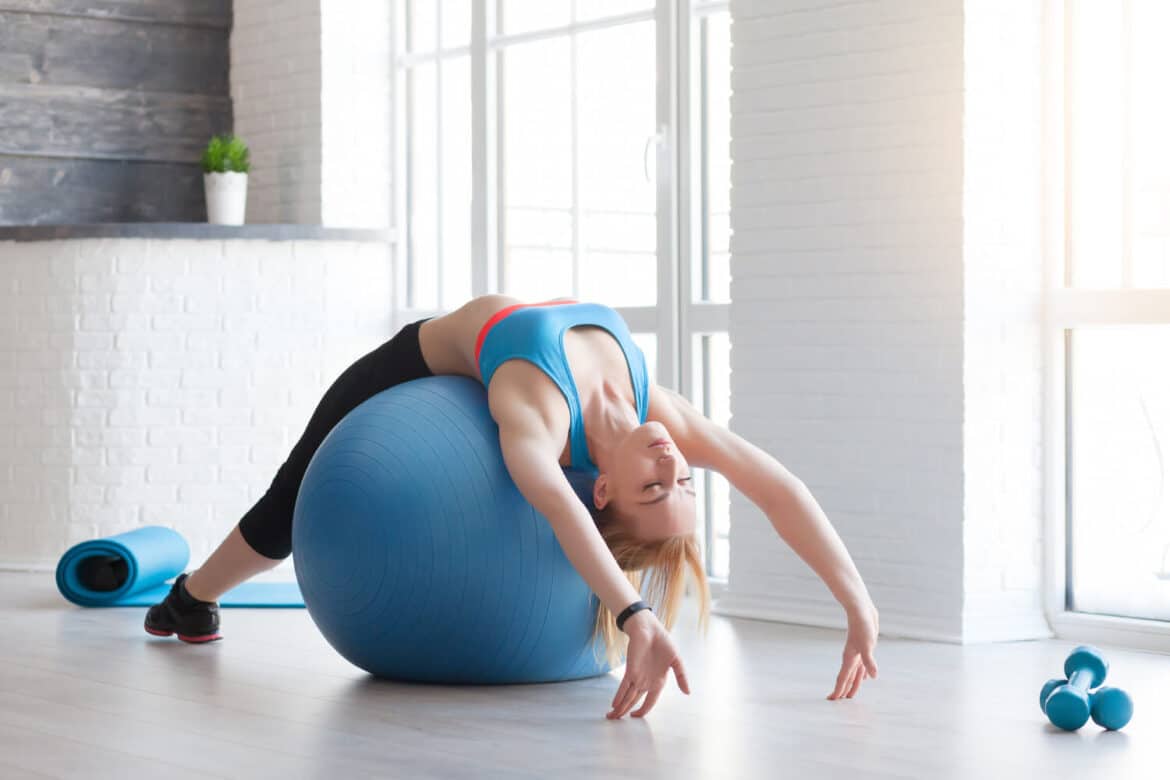Introduction
Does Pilates Help With Posture: In our increasingly sedentary world, where many of us spend long hours hunched over screens or seated at desks, maintaining good posture has become a significant concern for overall health and well-being. Poor posture can lead to a range of health issues, including back pain, muscle tension, and even reduced lung capacity. In the quest for a solution, many individuals turn to Pilates, a popular exercise method known for its holistic approach to physical fitness. But does Pilates truly help with posture? This question has sparked curiosity and interest among those seeking to improve their stance and overall body alignment. In this exploration, we will delve into the principles and practices of Pilates to uncover how it can be a valuable tool in enhancing posture and promoting a healthier, more aligned body.
One of the fundamental principles of Pilates is developing a strong and stable core. A strong core is essential for maintaining an upright posture as it supports the spine and helps distribute the load evenly. Pilates exercises often focus on engaging and strengthening the muscles in the abdomen, lower back, and pelvis, which, in turn, can contribute to better posture. Pilates places a significant emphasis on body awareness and alignment. Practitioners learn to pay attention to their body’s position and movement patterns. This heightened awareness helps individuals identify and correct posture-related issues.
By consciously engaging and adjusting their muscles during Pilates exercises, participants can carry this awareness into their daily lives, making it easier to maintain proper posture. Pilates exercises involve a wide range of movements that promote flexibility and mobility throughout the body. Stiff muscles and joints can contribute to poor posture, as they limit the ability to move and adjust naturally. Regular Pilates practice can help reduce muscular tension, increase joint mobility, and improve the range of motion, all of which are essential components of good posture.

Can you fix your posture with Pilates?
Pilates helps with posture as it helps to engage the deep core muscles in what was originally known as ‘the powerhouse’ – the abdominals, back and pelvic floor – which enables you to relax your shoulders and neck and alleviate pressure on your hips, legs and feet, in turn, improving your posture.
The Importance of Good Posture
Spinal Alignment: Good posture involves maintaining the natural curvature of the spine, promoting spinal health.
Muscle Function: Proper posture ensures that muscles work efficiently and minimizes the risk of strain and fatigue.
Breathing and Digestion: Good posture allows for optimal lung capacity and efficient digestion.
Confidence and Body Image: Improved posture can boost self-confidence and contribute to a positive self-image.
The Consequences of Poor Posture
Pain and Discomfort: Poor posture can lead to back, neck, and shoulder pain.
Reduced Lung Capacity: Slouching can restrict lung function, impacting overall health.
Digestive Issues: Compromised posture may hinder proper digestion and lead to gastrointestinal problems.
Decreased Energy: Fatigue is common when muscles have to work harder due to poor alignment.
How long does it take to correct posture with Pilates?
Research indicates that working out on a Reformer for minimum 12 weeks can improve posture. Another study underlines that 6 months of Reformer Pilates enhances cervical and thoracic spine alignment and may contribute to postural stability and improved performance.
Severity of Posture Issues
Mild Misalignment: Individuals with minor posture issues may see quicker results, often within a few weeks to a couple of months of consistent practice.
Moderate Misalignment: Those with more moderate posture problems may need several months to a year of dedicated Pilates practice to make significant improvements.
Severe Misalignment: People dealing with severe posture problems may require more extended periods, potentially over a year, to achieve substantial correction.
Commitment and Consistency
The frequency and consistency of Pilates practice play a pivotal role in how quickly improvements are seen. Regular, committed practice is essential.
A recommended starting point is 2-3 Pilates sessions per week, gradually increasing as strength and endurance improve.
Progression in Pilates Practice
Initial Phase (0-3 Months)
In the first few months of consistent Pilates practice, individuals typically experience increased body awareness and minor improvements in posture.
Exercises in this phase focus on core activation, muscle recruitment, and building a foundation for proper alignment.
Intermediate Phase (3-6 Months)
During this stage, practitioners may start noticing more significant changes in their posture.
Exercises become more challenging, targeting specific areas that need improvement, such as strengthening the muscles that support the spine.
Is Pilates or yoga better for posture?
“Between the two, if you’re looking to strengthen your core, improve your posture, and your overall fitness level and strength, go for Pilates,” Brandenberg recommends. “If you’re looking to increase your flexibility, find more peace of mind and that mind-body connection, I would go with yoga.”
Pilates for Posture
Core Strengthening
Pilates places a strong emphasis on strengthening the core muscles, which include the abdominals, back, and pelvic floor. A strong core provides the foundation for good posture.
Improved core strength helps support the spine and encourages an upright and aligned posture.
Targeted Exercises
Pilates includes exercises specifically designed to address posture-related issues. These exercises focus on spinal alignment, shoulder stabilization, and strengthening muscles that support the spine.
Many Pilates movements require precise body control, promoting awareness of posture during daily activities.
Flexibility and Mobility
Pilates incorporates stretching and flexibility exercises that can alleviate muscle tightness and joint stiffness associated with poor posture.
Enhanced flexibility enables better range of motion, contributing to an upright posture.
Yoga for Posture
Body Awareness
Yoga encourages mindfulness and body awareness, which can lead to better posture through conscious effort.
Practicing yoga poses often involves maintaining proper alignment and balance, promoting a heightened sense of posture.
Stretching and Mobility
Yoga includes a wide range of poses and stretches that improve flexibility and mobility in various body parts, including the spine and shoulders.
Enhanced flexibility can lead to more effortless and natural postural adjustments.
Can you fix bad posture with exercise?
The key to fixing poor posture is strengthening and stretching the muscles in the upper back, chest, and core. Shoulder strengtheners include scapula squeezes (squeezing your shoulder blades together for 30 seconds at a time) and rows (using a resistance band to pull back your elbows like you’re rowing).
Understanding Bad Posture
Types of Bad Posture
Forward Head Posture: The head is positioned forward of the shoulders, often due to excessive screen time.
Rounded Shoulders: The shoulders curve inward, creating a hunched appearance.
Kyphosis: Excessive rounding of the upper back, often associated with slouching.
Lordosis: Exaggerated inward curvature of the lower back, sometimes referred to as “swayback.”
Consequences of Bad Posture
Muscular Imbalances: Bad posture can lead to muscle imbalances, with some muscles becoming overactive and others weakened.
Pain and Discomfort: Individuals with poor posture often experience pain in the neck, shoulders, back, and hips.
Reduced Lung Capacity: Slouching can restrict lung function, impacting overall health.
The Role of Exercise in Correcting Bad Posture
Strengthening Weak Muscles
Exercise can target specific muscle groups that are weakened due to bad posture, helping to restore balance.
For example, exercises like rows and scapular retractions can strengthen the upper back muscles.
Stretching Tight Muscles
Tight muscles often contribute to poor posture. Stretching exercises can help lengthen and relax these muscles.
Stretching the chest and front shoulder muscles can counteract rounded shoulders.
Is 30 too late to fix posture?
No matter how old you are, it’s never really too late to improve your posture. For further help with your posture or any of the many conditions we treat, schedule a visit at Yale Neurosurgery New London today.
Understanding the Impact of Age on Posture
Accumulated Habits
Over the years, poor posture habits may have developed due to factors like prolonged sitting, working at a desk, or using digital devices extensively.
These habits can contribute to postural issues, but they can be modified with effort and commitment.
Muscular Changes
As we age, muscle mass and flexibility tend to decrease, making it important to address these changes through exercise and stretching.
Exercise can help maintain muscle strength and flexibility, crucial for good posture.
Why It’s Not Too Late
Posture Is Dynamic
Posture is not static; it can be changed and improved at any age with the right interventions.
The body is adaptable, and with consistent effort, it can learn new postural habits.
Health Benefits
Improving posture has numerous health benefits, regardless of age. These include reduced risk of musculoskeletal pain, improved lung function, and enhanced confidence.
Better posture can also prevent further postural deterioration as you age.
Which posture should be avoided?
Bad postures all involve taking the spine out of its neutral alignment position. Having a forward head is a common bad posture. Others include swayback and flatback.
Slouching While Sitting
Slouching is one of the most common posture problems, often seen while sitting for extended periods, especially at a desk or when using electronic devices.
Consequences
Increased pressure on the lower back, leading to pain and discomfort.
Compression of the chest and lungs, reducing lung capacity and potentially affecting breathing.
Muscle imbalances, as certain muscles become overused while others weaken.
Avoidance Tips
Sit back in your chair with your back straight, shoulders relaxed, and feet flat on the floor.
Use ergonomic chairs and accessories to support good posture.
Take regular breaks to stand, stretch, and walk around.
Text Neck
Text neck is a posture problem caused by looking down at electronic devices like smartphones and tablets for extended periods.
Consequences
Increased stress on the neck and spine, potentially leading to chronic pain and long-term damage.
Strain on the neck muscles, which can result in headaches and reduced mobility.
Avoidance Tips
Hold your devices at eye level to reduce strain on the neck.
Take frequent breaks from device usage to stretch and look up.
Consider exercises to strengthen the neck and upper back.
Is good posture more attractive?
While it’s icing on the cake, good posture can make us more attractive. “People look taller and slimmer when they have good posture,” admits Griffith. Sometimes it can even make our abdominals appear more defined.
The Impact of Posture on Attractiveness
Confidence: Good posture exudes confidence. Standing or sitting up straight can give the impression that you are self-assured and comfortable in your own skin. Confidence is undeniably attractive and can make you appear more appealing to others.
Height: Maintaining proper posture can add inches to your height, or at least make you appear taller. In many cultures, taller individuals are often perceived as more attractive, which can be advantageous in various social and professional situations.
Body Proportions: Good posture can accentuate your body’s natural proportions. When you stand tall and straight, your body’s proportions are more evident, and this can contribute to a more attractive appearance. A well-proportioned body is often considered more appealing.
Facial Alignment: Posture can affect the alignment of your facial features. When your head is held high and your chin is level, it can create a pleasing facial profile. This can make your face appear more attractive to others.
Energy and Vibrancy: Good posture can convey a sense of energy and vibrancy. Slouching or hunching can make you appear tired or disinterested, whereas good posture suggests vitality and engagement, which can be highly attractive qualities.
Does yoga improve posture?
Better Posture From Yoga
With a stronger core, you’re more likely to sit and stand “tall.” Yoga also helps your body awareness. That helps you notice more quickly if you’re slouching or slumping, so you can adjust your posture.
The Connection Between Yoga and Posture
Increased Body Awareness: Yoga encourages mindfulness and awareness of your body’s position. Through regular practice, you become more attuned to your posture and can identify areas where you may be slouching or holding tension.
Core Strength: Many yoga poses require you to engage your core muscles. A strong core provides essential support for the spine, helping you maintain an upright posture effortlessly.
Muscle Flexibility: Yoga postures involve various stretches that target different muscle groups. Stretching tight muscles, particularly those in the chest, shoulders, and hips, can help release tension that pulls you into poor posture.
Spinal Alignment: Yoga poses often incorporate gentle twists, backbends, and forward bends, which can promote spinal flexibility and alignment. A healthy spine is a fundamental component of good posture.
Balance and Stability: Yoga enhances balance and stability by improving proprioception (the sense of your body’s position in space). Better balance reduces the risk of falling and helps you maintain an upright posture.

Conclusion
Pilates stands as a highly effective method for addressing posture-related concerns and promoting overall musculoskeletal health. By targeting core strength, fostering body awareness, improving flexibility and mobility, and offering exercises specifically designed to correct common posture issues, Pilates equips individuals with the tools they need to attain and maintain better posture. Its holistic approach not only helps alleviate the discomfort associated with poor posture but also empowers practitioners to carry the benefits of improved alignment into their daily lives. As a result, Pilates emerges as a valuable and accessible avenue for anyone seeking to stand taller, move more gracefully, and enjoy the numerous physical and psychological advantages of a balanced and aligned posture.
Pilates instructors are trained to assess and correct posture during sessions. They can identify specific issues individuals may have, such as forward head posture or a rounded upper back, and tailor exercises to address these concerns. This personalized approach ensures that participants receive targeted guidance to correct their unique posture problems. Pilates involves holding certain positions for extended periods, which can build muscular endurance.
Improved muscular endurance is beneficial for maintaining proper posture throughout the day, as it allows individuals to support their bodies more effectively without fatigue or slouching. Pilates places a strong emphasis on the mind-body connection. Practitioners learn to concentrate on their movements and maintain a mindful awareness of their bodies. This heightened awareness extends to posture, encouraging individuals to recognize when they are not maintaining proper alignment and make immediate corrections.

